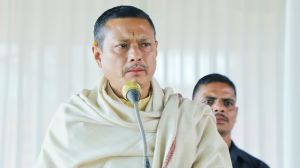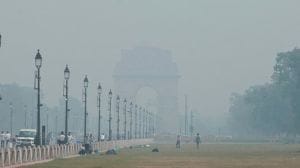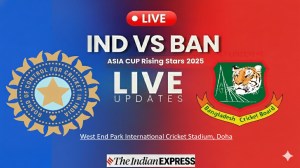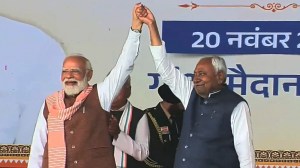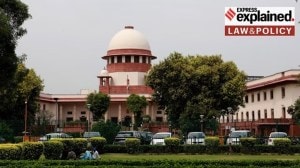Priya Kumari Shukla is a Senior Copy Editor in the Indian Express (digital). She contributes to the UPSC Section of Indian Express (digital) and started niche initiatives such as UPSC Key, UPSC Ethics Simplified, and The 360° UPSC Debate. The UPSC Key aims to assist students and aspirants in their preparation for the Civil Services and other competitive examinations. It provides valuable guidance on effective strategies for reading and comprehending newspaper content. The 360° UPSC Debate tackles a topic from all perspectives after sorting through various publications. The chosen framework for the discussion is structured in a manner that encompasses both the arguments in favour and against the topic, ensuring comprehensive coverage of many perspectives. Prior to her involvement with the Indian Express, she had affiliations with a non-governmental organisation (NGO) as well as several coaching and edutech enterprises. In her prior professional experience, she was responsible for creating and refining material in various domains, including article composition and voiceover video production. She has written in-house books on many subjects, including modern India, ancient Indian history, internal security, international relations, and the Indian economy. She has more than eight years of expertise in the field of content writing. Priya holds a Master's degree in Electronic Science from the University of Pune as well as an Executive Programme in Public Policy and Management (EPPPM) from the esteemed Indian Institute of Management Calcutta, widely recognised as one of the most prestigious business schools in India. She is also an alumni of Jamia Milia Islamia University Residential Coaching Academy (RCA). Priya has made diligent efforts to engage in research endeavours, acquiring the necessary skills to effectively examine and synthesise facts and empirical evidence prior to presenting their perspective. Priya demonstrates a strong passion for reading, particularly in the genres of classical Hindi, English, Maithili, and Marathi novels and novellas. Additionally, she possessed the distinction of being a cricket player at the national level. Qualification, Degrees / other achievements: Master's degree in Electronic Science from University of Pune and Executive Programme in Public Policy and Management (EPPPM) from Indian Institute of Management Calcutta ... Read More
UPSC Key- 5 July, 2023: What you should read in the news today
Exclusive for Subscribers from Monday to Friday: Have you ever thought about how the digital India Bill or the draft data protection Bill are relevant to the UPSC Exam? What significance do topics like Swing States or Belt and Road Initiative have for both the preliminary and main exams? You can learn more by reading the Indian Express UPSC Key for July 5, 2023.
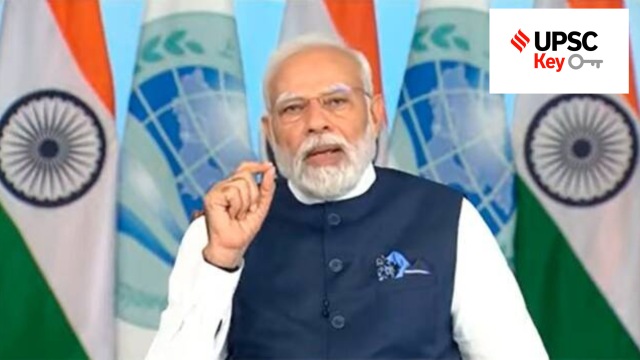 UPSC Key July 2023: Here's what you should be reading from the July 5, 2023 edition of The Indian Express. (PTI Photo)
UPSC Key July 2023: Here's what you should be reading from the July 5, 2023 edition of The Indian Express. (PTI Photo) Important topics and their relevance in UPSC CSE exam for July 5, 2023. If you missed the July 4, 2023 UPSC key from the Indian Express, read it here
FRONT PAGE
V-P Dhankhar weighs in: Any delay on UCC corrosive to our values
Syllabus:
Preliminary Examination: Indian Polity and Governance
Main Examination:
• General Studies II: Indian Constitution—significant provisions etc.
• General Studies II: Government policies and interventions for development in various sectors and issues arising out of their design and implementation.
Key Points to Ponder:
• What’s the ongoing story- Underlining that a Uniform Civil Code will “bind” the country together, Vice-President Jagdeep Dhankhar said Tuesday that “any further delay in implementation” of the UCC will be “corrosive” to “our values”. Speaking at the 25th convocation of IIT-Guwahati, Dhankhar said: “Our Constitution was given to us by very wise and sagacious people, Dr B R Ambedkar was the Chairman of the Drafting Committee, and they had included a very important part in the Constitution with respect to Directive Principles of State Policy. They were certain that these principles are fundamental in governance of the country… It is the duty of the State to apply these principles in making laws.”
• Uniform Civil Code-What’s the debate exactly?
• What has the 22nd Law Commission of India said regarding the Uniform Civil Code?
• “Any further delay in implementation” of the UCC will be “corrosive” to “our values”-Elaborate
• What is Directive Principles of State Policy?
• What are the main features of Directive Principles of State Policy?
• “The Panchayati raj system, the cooperatives and the right to education had all flowed from the Directive Principles of State Policy”-Comment
• What are arguments for implementing Uniform Civil Code in India?
• What are arguments against implementing Uniform Civil Code in India?
• What constitutional experts saying in this regard?
• “Uniform Civil Code that will applicable throughout the territory of India”-Do you think the implementation will adversely impact India’s Diversity?
• “Unity in Diversity” and “Uniform Civil Code”-connect the dots
Other Important Articles Covering the same topic:
📍UCC is against interest of ethnic minorities, says Mizoram CM
Xi & Shehbaz listening, PM: Can’t have double standards on terrorism
Syllabus:
Preliminary Examination: Current events of national and international importance.
Mains Examination: General Studies II: Bilateral, regional and global groupings and agreements involving India and/or affecting India’s Interests.
Key Points to Ponder:
• What’s the ongoing story- In remarks targeting China and Pakistan while President Xi Jinping and Prime Minister Shehbaz Sharif were listening, Prime Minister Narendra Modi said Tuesday that some countries “use cross-border terrorism as an instrument” of their policies and the Shanghai Cooperation Organisation (SCO) should not hesitate to criticise such nations because there can be “no place for double standards on such serious matters”. Delhi has been repeatedly pointing out that Islamabad uses terrorist groups as instruments of “state policy”, while Beijing has been blocking the listing of Pakistan-based terrorists at the UN Security Council (UNSC).
• What is Shanghai Cooperation Organisation?
• What kind of a grouping is the Shanghai Cooperation Organisation?
• Know the members and observer countries in Shanghai Cooperation Organisation
• Map Work-Mark Shanghai Cooperation Organisation member countries with their capital
• What exactly PM Modi said in the virtual summit?
• What are the key takeaways from PM Modi’s address to SCO members?
• What is the China Belt and Road Initiative?
• How many countries are part of BRI?
• Why is it called Belt and Road?
• Why India opposes BRI?
• It is often observed that China opposes India in the UNSC or blocks India’s resolutions frequently—why is it so?
• Modi also took on Beijing and Islamabad on the China-Pakistan Economic Corridor (CPEC), saying while executing connectivity projects, it is essential to “respect the sovereignty and territorial integrity” of member countries of the SCO- What is China-Pakistan Economic Corridor (CPEC)?
• How China-Pakistan Economic Corridor (CPEC) is affecting India’s sovereignty and territorial integrity
• What is the Regional Anti-Terrorist Structure (RATS)?
• During the SCO summit, which country is inducted as a new member?
• For Your Information-During the SCO summit, Iran was inducted as a new member and President Ebrahim Raisi attended the virtual summit. Modi said they can work towards maximising the utilisation of the Chabahar port. “The International North-South Transport Corridor can serve as a secure and efficient route for landlocked countries in Central Asia to access the Indian Ocean. We should strive to realise its full potential,” he said. An in-person summit was scheduled in New Delhi, but the plan was changed early June. The last in-person SCO summit took place in Samarkand, Uzbekistan in September 2022. The theme of India’s SCO presidency, SECURE, was derived from the acronym given by Modi at the 2018 SCO summit in Qingdao. During its presidency, he said India has created five new pillars and focus areas of cooperation in SCO – startups and innovation, traditional medicine, digital inclusion, youth empowerment and shared Buddhist heritage.
Other Important Articles Covering the same topic:
📍India refuses to back Xi’s BRI project
📍Putin raises Wagner’s mutiny, thanks SCO leaders for support
📍Iran in the SCO: The background, context, and relevance
📍Explained: What next for China’s Belt and Road initiative
Discounted Russian crude imports saved Indian refiners $7 bn
Syllabus:
Preliminary Examination: Current events of national and international importance.
Mains Examination: General Studies II: Bilateral, regional and global groupings and agreements involving India and/or affecting India’s interests.
Key Points to Ponder:
• What’s the ongoing story- Indian refiners saved at least $7.17 billion in foreign exchange in the 14 months that ended May 2023 by ramping up purchases of discounted Russian crude oil following the outbreak of the war in Ukraine, an analysis of India’s trade data for the period shows.
• What percentage of India’s oil import is imported from Russia?
• How much trade does India have with Russia?
• Why India imports more oil from Russia?
• Do You Know- India, the world’s third-largest consumer of crude oil, depends on imports to meet over 85 per cent of its oil needs. With Western buyers cutting oil imports from Russia in the wake of its February 2022 invasion of Ukraine, Moscow has been offering discounts on its crude. Indian refiners have been lapping up these discounted barrels, so much so that Russia, which used to be a marginal player in India’s oil trade, is now New Delhi’s biggest oil supplier. The total value of India’s oil imports for the 14-month period from April 2022 to May 2023 was $186.45 billion. Had Indian refiners paid for Russian oil the average price they paid for crude from all other suppliers put together, the oil import bill would have been $193.62 billion. Russian crude accounted for 24.2 per cent of India’s oil imports totalling 280.41 million tonnes, or 2.06 billion barrels, in the 14 months to May. During the period, Russia displaced traditional heavyweights like Iraq and Saudi Arabia to emerge as India’s largest supplier of crude. Iraq was the second-biggest supplier with a market share of 21 per cent by volume, followed by Saudi Arabia with a 16.4 per cent share. Compared to the next five major suppliers of crude to India during the 14-month period, the landed price of Russian oil was at discounts ranging between 10 per cent – in the case of Iraq – and 22.1 per cent – in the case of the UAE. The UAE was the fourth-biggest supplier of crude to India during the period. The share of Russian crude in India’s oil import basket has been rising continuously for over a year and has been hitting fresh highs for the past few months. In May, Russian crude accounted for 40.4 per cent of India’s total oil import volumes, followed by Iraq with a market share of 18.3 per cent, and Saudi Arabia with a share of 12.2 per cent, the trade data showed.
• Russia plays a very important role in logistical as well as technological support when it comes to defence forces-Know India and Russia Military trade
• India’s bilateral trade with Russia has soared to an all-time high in just five months (April-August) of this financial year (2022-23)-Know the reasons
• The majority of countries have imposed sanctions on Russia or countries that buy Russian oil. How will this news influence Russia’s oil sanctions?
• Why Josep Borrell who is European Union’s foreign and security policy chief said the EU should crack down on India reselling Russian oil as refined fuels, including diesel, to Europe?
• What was India’s response to that?
• For Your Information-Indian refiners exported an average of around 284,000 barrels per day (bpd) of refined petroleum products to Europe in the December-April period, up from about 170,000 bpd in the year-ago period, shows data from Vortexa. From being a marginal supplier of crude oil to India before the war in Ukraine, Russia dethroned heavyweights like Iraq and Saudi Arabia to emerge as Delhi’s biggest source of crude.
• What is EU Council Regulation 833/2014?
• How can India reduce its dependency on oil imports?
• What crude oil means?
• What are the types of crude oil?
• Why India is dependent on crude oil?
• Where does India import oil?
• India’s domestic crude oil and natural gas production has declined steadily-why?
• What steps have been taken by the Government of India to reduce the imports of crude oil?
• What is the difference between Open Acreage Licensing Programme (OALP), New Exploration Licensing Policy (NELP) and Hydrocarbon Exploration and Licensing Policy (HELP)?
• How high reliance on imported crude oil impacts the Indian economy?
• Do You Know-The share of high-sulphur crudes, or sour crudes, in India’s oil imports in 2022-23 rose to 77.5 per cent from 76.6 per cent a year ago. Indian refiners imported a total of 197.9 million tonnes of sour crudes during the fiscal, up from 185 million tonnes a year ago. Import volumes of low-sulphur crudes, or sweet crudes, rose marginally to 57.3 million tonnes in 2022-23 from 56.7 million tonnes in 2021-22. Sour crudes have high sulphur content, which makes the refining process complex and relatively more cost-intensive than refining sweeter grades of oil. However, sour crudes are usually cheaper than sweet crudes and newer refineries are equipped to process them. In the Indian crude basket, which represents a derived basket of the two grades as per Indian refineries’ processing of crude, the ratio of sour to sweet grades is 75.62 to 24.38.
Other Important Articles Covering the same topic:
📍Explained: The fall in crude oil prices, and its impact in India
📍The significance of rise in India’s petroleum product exports to EU
THE EDITORIAL PAGE
Syllabus:
Preliminary Examination: Current events of national and international importance
Mains Examination: General Studies II: Bilateral, regional and global groupings and agreements involving India and/or affecting India’s interests.
Key Points to Ponder:
• What’s the ongoing story-Move over SCO and BRICS! Goldman Sachs, the global investment bank that talked of “dreaming with the BRICs” two decades ago, has a new idea now — “swing states” that will shape the global balance of power. Unlike BRICS and SCO, whose salience can only dim in the Indian strategic calculus, “swing states” are beginning to loom larger in Delhi’s strategic priorities. The concept of BRICs — Brazil, Russia, India, and China — was about Goldman Sachs drawing investor attention to the economic potential of the four nations at the turn of the millennium. But the idea acquired a political life of its own.
• What is the idea behind “swing states”?
• Do You Know-The idea of “swing states” could endure because it is less ideological. It is rooted in the structural condition of the international system — the emergence of several nations, big or small, with significant resources, capacities, or location, to influence geopolitical outcomes. The idea had begun to gain prominence in the early 21st century as analysts focused on several “pivotal states” that could make a difference to the global distribution of power. With the sharpening of the great power conflict in the last few years, the idea of “swing states” has gained considerable traction. The report identifies four kinds of swing states. These are countries that can dominate “critical components of the world’s supply chains”; states that can “capitalise on current trends toward near-shoring, off-shoring, and friend-shoring”; nations with “disproportionate amount of capital and willingness to deploy it around the world in pursuit of strategic objectives”, and countries that can bring global leadership to critical issues. Addressing global investors, Goldman Sachs says “the most effective business leaders will be those who work relentlessly to understand how changes in the geopolitical landscape create new risks and present new business opportunities.”
• What have you understand by this term “swing states”?
• Evolution of BRICS-Know in Detail
• Evolution of BRICS from Russia-China (RC) to Russia-India-China (RIC) to Brazil- Russia-India-China (BRIC) to Brazil-Russia-India-China-South Africa (BRICS)
• Brazil, Russia, India, China and South Africa (BRICS) Economy-Key Features
• RIC (Russia-India-China) out of BRICS-Significance and Stature in World Politics?
• Why BRICS Matters?
• Evolution of Shanghai Cooperation Organisation-Know in Detail
• For Your Information-Like the Shanghai Cooperation Organisation that was formed in 2001, the idea of the BRICS was a simple one — to limit American power in the unipolar moment of the 1990s. The Russians, who were looking for a way to reclaim their global position after the collapse of the Soviet Union, found BRICs a useful platform to counter the West. The Russia-India-China (RIC) forum — the so-called strategic triangle — pushed by Moscow provided the scaffolding on which to mount the new organisation. If the ambition of the BRICS was global, the focus of the SCO was regional — to keep the US and its “colour revolutions” out of the shared inner Asian periphery of Russia and China. The “Shanghai Five” was convened by Russia and China in 1996 along with three central Asian states — Kazakhstan, Kyrgyzstan, and Tajikistan — three former Soviet Republics that shared borders with China. Formally set up in 2006, the four initial members of the BRICs forum welcomed South Africa into their ranks in 2010 to make it BRICS. Both the SCO and the BRICS are now debating the expansion of their membership as the worldwide interest in them grows. Notwithstanding the ambitious plans for their expansion, the SCO and BRICS are running out of their geopolitical steam as the context that brought them together at the turn of the millennium no longer exists.
• The geopolitics of BRICS looks quite different today-how?
Other Important Articles Covering the same topic:
📍Brazil, Russia, India, China and South Africa (BRICS)
📍Why BRICS Still Matters
📍BRICS and the creation of a multipolar world
THE WORLD
Make India, Japan, Brazil, Germany UNSC permanent members: UK
Syllabus:
Preliminary Examination: Current events of national and international importance.
Mains Examination: General Studies II: Important International institutions, agencies and fora- their structure, mandate.
Key Points to Ponder:
• What’s the ongoing story- The UK has called for the expansion of the UN Security Council‘s permanent seats to include India, Brazil, Germany and Japan as well as African representation, underlining that it is high time the powerful UN body entered the 2020s. Permanent Representative of the United Kingdom to the United Nations and President of the Security Council for the month of July Ambassador Barbara Woodward’s comments came as she briefed UN correspondents on the programme of work of the Security Council for the month.
• United Nations-what all you know about this organisation?
• According to the UN Charter, Article 23, “The Security Council shall consist of fifteen Members of the United Nations”-do you know who all are the fifteen members?
• Permanent members and Non-permanent members-Compare and Contrast
• Five permanent members ten non-permanent members-know in detail
• How Voting System works in United Nations Security Council
• For Your Information- According to the United Nations Security Council website, Article 27 of the UN Charter states that: 1. Each member of the Security Council shall have one vote. 2. Decisions of the Security Council on procedural matters shall be made by an affirmative vote of nine members. 3. Decisions of the Security Council on all other matters shall be made by an affirmative vote of nine members including the concurring votes of the permanent members; provided that, in decisions under Chapter VI, and under paragraph 3 of Article 52, a party to a dispute shall abstain from voting.
• What is Veto power in UNSC?
• Which members of the UNSC can exercise Veto Power?
• Do You Know-According to the United Nations Security Council website, The creators of the United Nations Charter conceived that five countries — China, France, the Union of Soviet Socialist Republics (USSR) [which was succeeded in 1990 by the Russian Federation], the United Kingdom and the United States —, because of their key roles in the establishment of the United Nations, would continue to play important roles in the maintenance of international peace and security. They were granted the special status of Permanent Member States at the Security Council, along with a special voting power known as the “right to veto”. It was agreed by the drafters that if any one of the five permanent members cast a negative vote in the 15-member Security Council, the resolution or decision would not be approved. All five permanent members have exercised the right of veto at one time or another. If a permanent member does not fully agree with a proposed resolution but does not wish to cast a veto, it may choose to abstain, thus allowing the resolution to be adopted if it obtains the required number of nine favourable votes.
• Do You think that the veto power given to five permanent members of the UNSC should be abolished?
• On what basis was Security Council permanent membership granted?
• How are the non-permanent members of the Security Council selected?
• Are UN resolutions binding?
• Is Security Council reform in any way moving forward?
• What is the process for Security Council reform?
• How does the Security Council determine the existence of any threat to the peace, breach of the peace, or act of aggression?
• “Veto power was granted in the UN Charter 77 years ago to encourage each other, but it has turned out that the power is being used to block”-Analyse
• “UN Security Council (UNSC) has become “paralysed” and “dysfunctional” in its “present form”, as it has not been able to take any decision since the Russia-Ukraine war started”-How far you agree with the given statement?
• India and United Nations-Know in detail
• What has been India’s stand on UN reformation?
Other Important Articles Covering the same topic:
📍Explained: India at the United Nations high table
📍‘Another wasted opportunity’: India criticises delay in UNSC reforms
EXPLAINED
Syllabus:
Preliminary Examination: Current events of national and international importance.
Mains Examination: General Studies II: Government policies and interventions for development in various sectors and issues arising out of their design and implementation.
Key Points to Ponder:
• What’s the ongoing story- The government’s approval last week for a National Research Foundation (NRF) is being widely welcomed by the scientific community. The NRF has the potential to, single-handedly, address a whole range of deficiencies in India’s scientific research sector that have been flagged for years now. A huge pool of science and engineering graduates, a large network of laboratories and research institutions, and active involvement in some of the frontline areas of scientific research usually puts India among the leading countries with deep scientific abilities. However, in comparative terms, India lags behind several countries, some with much more limited resources, on a variety of research indicators.
• What is National Research Foundation?
• What is the purpose of National research Foundation?
• For Your Information-The principal reason to form the NRF is to foster collaboration among academic and research institutions, industry and government departments. The NRF will create a policy framework and regulatory processes that can encourage collaboration and increased spending by industry on research and development. Apparently, a Bill needed to be introduced because current laws do not easily permit a private organisation to contribute funds for research to a body, such as the NRF. The NRF will play a pivotal role in seeding, nurturing and promoting research, innovation and development across universities, colleges, research institutions, and R&D laboratories. It will create an interface mechanism so that, in addition to the scientific and line ministries, the state governments and industries can also participate and contribute to scientific R&D.
• What is the aim of National Research Foundation?
• The administrative department of the NRF will be managed by whom?
• The governance of NRF will be formulated by a Governing Board, presided by whom?
• The principal reason to form the NRF is what?
• For Your Information-Primary among these is the money India spends on research and development activities. For more than two decades now, the Centre’s stated objective has been to allocate at least two per cent of the national GDP on R&D. Not only has this objective not been met, the expenditure on research as a proportion of GDP has gone down, from about 0.8 per cent at the start of this millennium to about 0.65 per cent now. For the last decade or so, this share has remained stagnant. This does not mean that money for research has not increased. The spending on research has more than tripled in the last 15 years, from Rs 39,437 crore in 2007-08 to over 1.27 lakh crore in 2020-21. But India’s GDP has grown faster, and so the share of research has gone down.
• How much does India barely spend on research and development?
• Do You Know-India barely spends 0.7 per cent of its GDP on research and development, which is extremely low compared to many other countries. In fact, the gross expenditure on R&D declined from 0.84 per cent in 2008 to about 0.69 per cent in 2018, the last year for which confirmed figures are available. In comparison, the US spent 2.83 per cent, China spent 2.14 per cent, and Israel spent 4.9 per cent. Even Brazil, Malaysia and Egypt spend more of their GDP on research. The proposal for an NRF was first floated in the public domain by Prime Minister Narendra Modi on January 3, 2019 during his address to the Indian Science Congress. The NRF found a second mention on January 20 that year during a joint session of Parliament, and then later in the Finance Minister’s speech during the Budget Session in July 2019. The creation of NRF was also one of the key recommendations of the National Education Policy 2020.
• What are the loopholes in National Research Foundation?
Other Important Articles Covering the same topic:
📍What is National Research Foundation?
📍Smoothing the path of science
ECONOMY
Data protection Bill likely to come up before Cabinet today
Syllabus:
Preliminary Examination: Current events of national and international importance
Main Examination: General Studies II: Government policies and interventions for development in various sectors and issues arising out of their design and implementation.
Key Points to Ponder:
• What’s the ongoing story- The draft data protection Bill is expected to come up before the Union Cabinet today (Wednesday), with the legislation expected to be tabled in the Monsoon session of Parliament after Cabinet approval, The Indian Express has learnt. A draft of the Bill was first floated last November, following which it underwent a few rounds of public consultation. Based on the inputs received during the consultations, a second draft was readied which then underwent some rounds of inter-ministerial discussions.
• Why does data matter?
• What is Data Protection?
• What is personal data?
• What is non-personal data?
• Personal data and Non-personal data-compare
• The government withdrew the earlier Personal Data Protection Bill from Parliament. Why did the Government withdrawn the Personal Data Protection Bill?
• Joint Committee of Parliament Report on the Personal Data Protection Bill-Know key highlights
• Supreme Court on Right to Privacy (Justice K.S. Puttaswamy vs. Union of India, 2017)-know the verdict
• Justice B N Srikrishna committee recommendation on Data Protection-Know key recommendations
• Personal Data Protection Bill 2019- how this Bill propose to regulate data transfer?
• Key features of Personal Data Protection Bill 2019-know in brief
• What is data localisation? Know the Case for Data Localisation in India.
• What Srikrishna Committee Report says on data localisation?
• Initiative/steps taken by Government of India for Data Protection and Data Privacy-Know in detail
• What is the role of the Data Protection Board as per the revamped version of the Data Protection Bill?
Other Important Articles Covering the same topic:
📍Explained: The issues, debate around Data Protection Bill
Digital India Bill to prescribe guardrails for digital competition; separate law to enforce rules
Syllabus:
Preliminary Examination: Current events of national and international importance.
Mains Examination: General Studies II: Government policies and interventions for development in various sectors and issues arising out of their design and implementation.
Key Points to Ponder:
• What’s the ongoing story- As a committee set up by the Ministry of Corporate Affairs (MCA) readies a draft law on digital competition, the IT Ministry, the nodal entity for the Internet space in India, is expected to prescribe broad principles for the competition space, with the MCA taking the lead in formulating and enforcing specific rules related to the sector. The committee, which was set up by the MCA in February, it is understood, is considering proposing “ex ante” competition regulations for the digital space – taking a cue from a recommendation made by a Parliamentary panel, and one that has been opposed by big technology companies.
• The Digital India Bill-Know its key provisions
• What is the proposed Digital India Bill?
• Digital Personal Data Protection Bill, 2022, Indian Telecommunication Bill, 2022, and a policy for non-personal data governance-Know key provisions
• “Online platforms should continue enjoying safe harbour protections, which is currently afforded to them under the IT Act, 2000, or such protections should become conditional”-What do you understand by “safe harbour protections”?
Other Important Articles Covering the same topic:
📍Govt rethinking ‘safe harbour’ in Digital India Bill: How this could change internet landscape
For any queries and feedback, contact priya.shukla@indianexpress.com
The Indian Express UPSC Hub is now on Telegram. Click here to join our channel and stay updated with the latest Updates.
UPSC Magazine
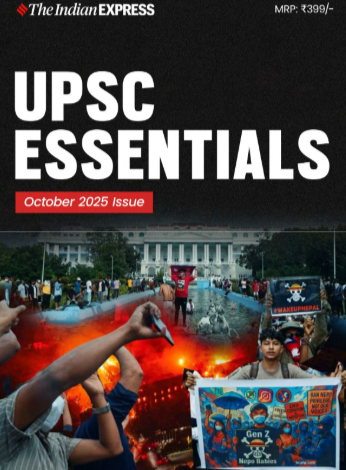
Read UPSC Magazine



- 01
- 02
- 03
- 04
- 05










